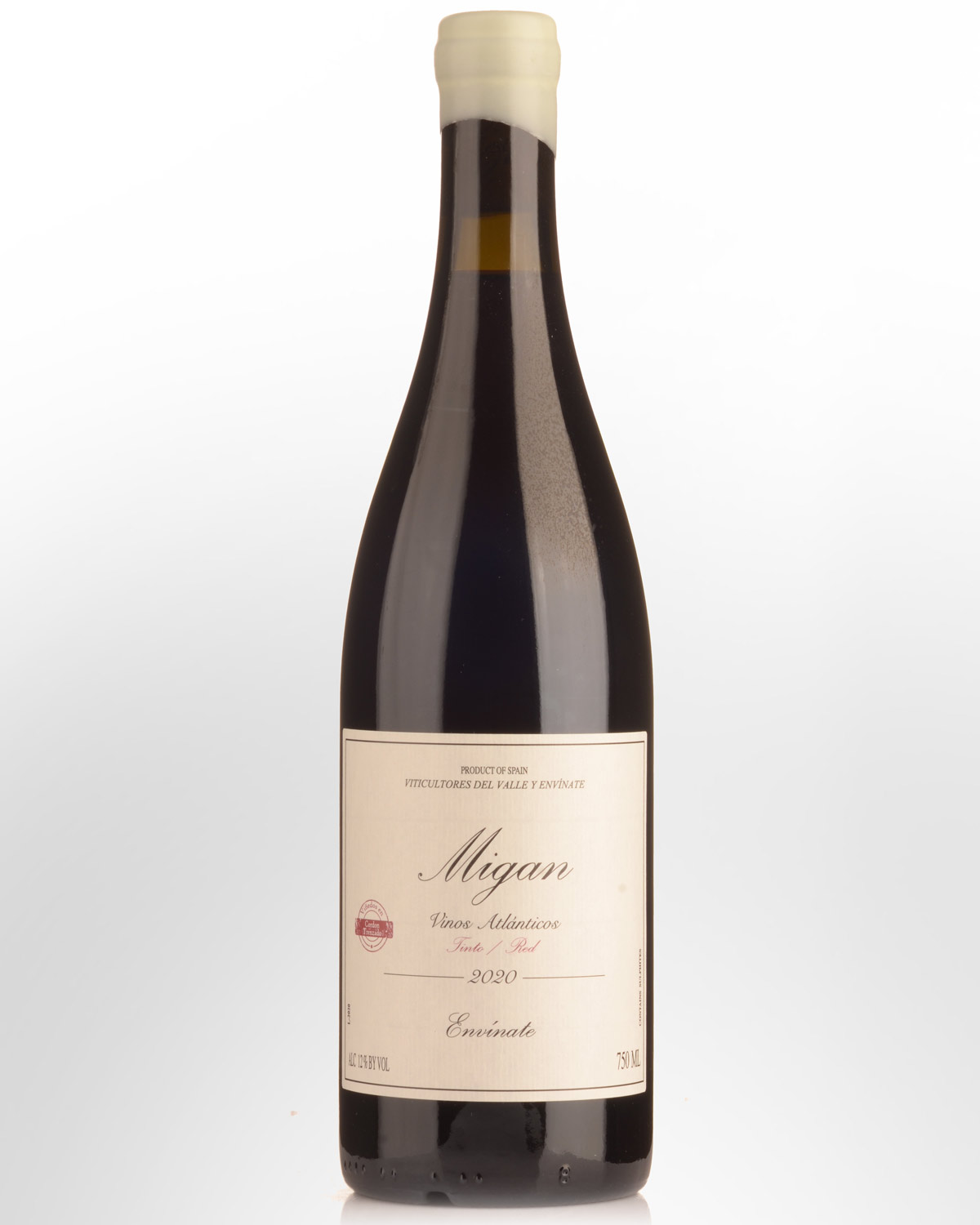
- 95
- 94
2020 Envinate Migan Tinto
Envínate, which literally translates as “Wine Yourself,” is the project of four young passionate winemakers: Roberto Santana (based in the Canaries), Jose Martinez (Almansa), Laura Ramos (Murcia) and Alfonso Torrente (Ribeira Sacra). The four met while studying oenology in Alicante in 2005 and formed a collective based on a shared philosophy of wine and a desire to explore the ancient, Atlantic influenced terroirs of western Spain.
In 2008, the group bought their first vineyard in Ribeira Sacra, then took control of vineyards on the north side of Tenerife, and followed with a single patch of Tinta Amarela in Extremadura. Finally, in 2012, the group began working with a site in Almansa, where Jose lives and works, planted to Garnacha Tintorera. In each region, they work old, previously abandoned vineyards, but importantly for a project with such spread, one of the team lives full time in each location, working the vineyards year round.
Migan and Palo Blanco are both very old vine wines from the Valle de la Orotava zone, although they don’t bear the D.O. stamp. The old vines are trained in the Trezendo fashion: braiding new shoots over older ones until the vines begin to resemble old dreadlocks weaving over the landscape. The terrain is flatter than Táganan, more conducive to farming. Migan is two parcels of Listan Negro, both over 100 years old, while Palo Blanco is a single vineyard from the town of Los Realejos planted on black volcanic soils.
Other Reviews....
The 2020 Migan is a red from La Orotava and was produced with Listán Negro grapes from the village of La Perdoma, whose ancient name was Migan. It comes from four plots—Montijo (40% of the grapes), Tío Luis (30%), La Habanera (20%) and Las Suertes (10%)—on red volcanic soils and at different altitudes, between 350 and 600 meters above sea level, where altitude defines the character of the plot. In 2020, they didn't use the San Antonio vineyard that was used in previous vintages; it has been replaced by Montijo. 2020 was an early harvest, and the grapes fermented by plot, always with indigenous yeasts, and 70% of the wine matured in neutral 500- and 600-liter oak barrels, while the wine from Tío Luis matured in concrete. The change in vineyards (they abandoned the one with more clay at lower altitude and increased in higher altitude and with less clay) has given the wine an extra kick. These wines reward time in bottle, and they need at least one year. Right now, this feels a little closed and tight, but it has great freshness and finer tannins and, in the long run, should make a better wine than the 2019. 11,500 bottles and 300 magnums were produced. It was bottled in December 2021. Drink 2023 - 2028.
95 points
Luis Gutiérrez - Wine Advocate (Feb 2022)
These Envinate wines are something else. Made from amazing bush vines on Tenerife. They’re of the ilk of the most fine boned red wines but with incredible, beautiful tannin profile. Profound wines, and so distinct. These are some of the most sought after wines I know of from Spain. And worthy in that regard.
This one is gossamer with the finest, silty tannin pucker. It’s fragrant in sour cherry, crushed rocks, puffs of soot and faint wild herb character. Flavours are similar and the wine sits at a beautiful lightish weight, full of that dark fruit and grippy minerality but with savouriness, game meat and more fragrant herb to taste. So succulent, so very pure feeling and so damn delicious. Remarkable wines of character and finesse and yet a wild streak reminiscent of their wild place they grow. Must do wines. Drink 2022 - 2028.
94 points
Mike Bennie - The Wine Front
to most of Australia
